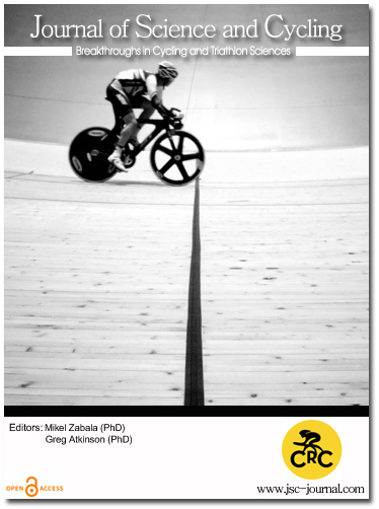The effect of intermittent sequential pneumatic compression on recovery between exercise bouts in well-trained triathletes.
Keywords:
Recovery boots, fatigue, running, cycling, performanceAbstract
To evaluate the effectiveness of one method of intermittent sequential pneumatic compression (ISPC) on the recovery between exercise bouts in well-trained triathletes. Ten well-trained male triathletes (mean ± SD; age = 29 ± 9 y, mass = 72kg ± 11kg) completed a familiarization trial and two experimental trials in a randomized, cross-over design. Participants performed a 40-minute high-intensity interval session on a cycle ergometer, followed by a 30- minute recovery period where participants completed either passive recovery (CON) or ISPC recovery. Following the recovery period, participants performed a 5km run time-trial on a treadmill (5kmTT). Blood lactate concentration, 5kmTT time and total quality recovery (TQR) were used to examine the effect of ISPC compared to CON. The 5kmTT resulted in a non-significant difference (P = 0.31, ES = 0.07) between groups of 8.2 ± 23.7 seconds in favour of the ISPC trial (ISPC; 1189.7 ± 94.9 and CON; 1197.9 ± 101.9). There were no significant differences between trials for blood lactate concentrations or TQR. The current study reports that ISPC was not effective in improving recovery between a cycling and running bout in well-trained triathletes.
Downloads
Published
How to Cite
Issue
Section
Copyright (c) 2015 Journal of Science and Cycling

This work is licensed under a Creative Commons Attribution-NonCommercial 4.0 International License.
Authors contributing to Journal of Science and Cycling agree to publish their articles under a Creative Commons CC BY-NC-ND license, allowing third parties to copy and redistribute the material in any medium or format, and to remix, transform, and build upon the material, for any purpose, even commercially, under the condition that appropriate credit is given, that a link to the license is provided, and that you indicate if changes were made. You may do so in any reasonable manner, but not in any way that suggests the licensor endorses you or your use.
Authors retain copyright of their work, with first publication rights granted to Cycling Research Center.






